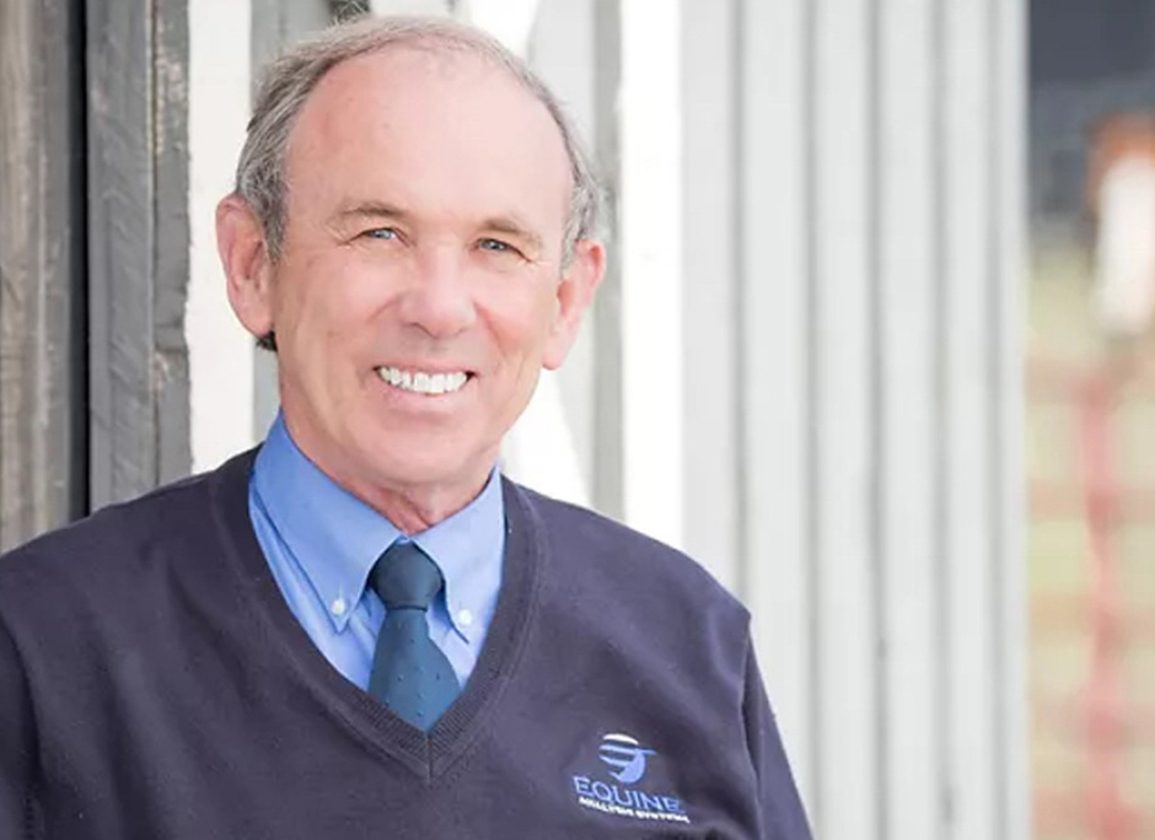As the sport continues in its efforts to drastically reduced the number of fatalities that occur in races and in morning training, there's little doubt that StrideSAFE is going to play an important role in preventing breakdowns.
StrideSAFE is a biometric sensor mechanism that slips into the saddle cloth to detect minute changes in a horses's gait at high speed. Those changes can, and often do, signal that a horse is in the early stages of having a problem that could lead to a fatal injury. If the StrideSAFE data is made available to trainers and veterinarians, they can use it to make decisions that very well could save a horse's life.
To learn more about StrideSAFE, we brought in its CEO Dr. David Lambert for this week's TDN Writers' Room podcast presented by Keeneland to discuss how the technology works and what it can do to keep our horses safer. Lambert was the Green Group Guest of the week.
“We recognized early on that every horse has his own unique way of going,” Lambert said. “The sensors would pick up the same pattern for the same horse all the time. But if something were to go wrong with that horse, then that pattern changes and the sensors are able to pick that up. And so the preliminary work was to look at cases where we knew the horses had suffered a fatal injury and try to quantify the nature of the patterns that preceded the fatality. That was the basic research that we had to tidy up, and that's where we are now. We've got that pattern. We can identify each individual horse's style. We've got an elaborate model that can tell us when the changes that are happening in a horse's body are happening and putting them at greater risk of a fatal injury.”
How effective is it? Originally, horses were put into three categories, red, yellow and green. Red representing the horses at the highest risk of being injured, while green includes the ones at the least risk. They have since changed the categories with horses in category five the most likely to suffer a fatal injury.
“The animals that have the worst signal and are in category five, the worst data, are 300 times more likely to suffer a fatality than are the ones that get the normal signal,” Lambert said. “So we're able to quantify the amount of risk a horse is at once he's come out of a race. So the horse is wrong. Here he is. He's back at the barn. We get the results. And that horse, the data that horse showed us in that race tells us that he was he's now 300 times more likely to suffer a fatality. We give that to the trainer. This isn't an absolute. But that horse is a seriously increased level of risk. And all we're asking the trainer to do is have a special look, bring your vets in, because the vets know where these fractures occur.”
While no one is doubting that StrideSAFE's information is accurate and can be vitally important, the racing industry has yet to embrace it. It has been used on a trial basis at some tracks, including the NYRA tracks, but is not yet in regular use at any track. Why?
“I think the answer to that is probably just human nature,” Lambert said. “When you come with any idea to a large group of people there are going to be those unusual folks who jump on it straight away. And then there'll be those who get used to it a little bit later. The establishment and the political players, if you like, the management level, are going to be slower still. They have a complex responsibility to the sport at large. They must be absolutely sure that something is valid before they allow it to happen. They can't go off, you know, with a knee jerk reaction jumping in and causing more harm than good. And then, of course, at the other end of that, there's always the soothsayers that just want no part of it. And then all of them are bound by money. They might want to do it and can't afford it. So there's the whole spectrum of things that have, I think, been in evidence as we've tried to bring this forward. But slowly but surely we're making progress. People are getting on board. And I'm feeling pretty optimistic now that we're going to get this done.”
Elsewhere on the podcast, which is also sponsored byhttps://coolmore.com/https://lanesend.com/ the Pennsylvania Horse Breeders Association, Kentucky Thoroughbred Owners and Breeders,https://www.nyrabets.com/ WinStar Farm, XBTV.com, Stonestreet Farms, Lane's End andhttps://www.threechimneys.com/ West Point Thoroughbreds, the team of Zoe Cadman, Bill Finley and Randy Moss discussed the remarkable safety record at the recently concluded Del Mar meet where not a single horses broke down during the running of a race. The discussion included a look at a pair of 'TDN Rising Stars' who exited stakes races on closing weekend at Del Mar, where Tamara (Bolt d'Oro), the daughter of Hall of Famer Beholder (Henny Hughes), was a very impressive winner of the GI Del Mar Debutante. The team was not quite as bullish on the victory by Prince of Monaco (Speightstown), who was hard pressed to win the GI Del Mar Futurity as the 1-20 favorite. Randy Moss previewed the “Win and You're In” races to be held Saturday at Woodbine and will be broadcast by Moss and his team on NBC.
To watch the Writers' Room, click here. To view the show as a podcast, click here.
Not a subscriber? Click here to sign up for the daily PDF or alerts.






